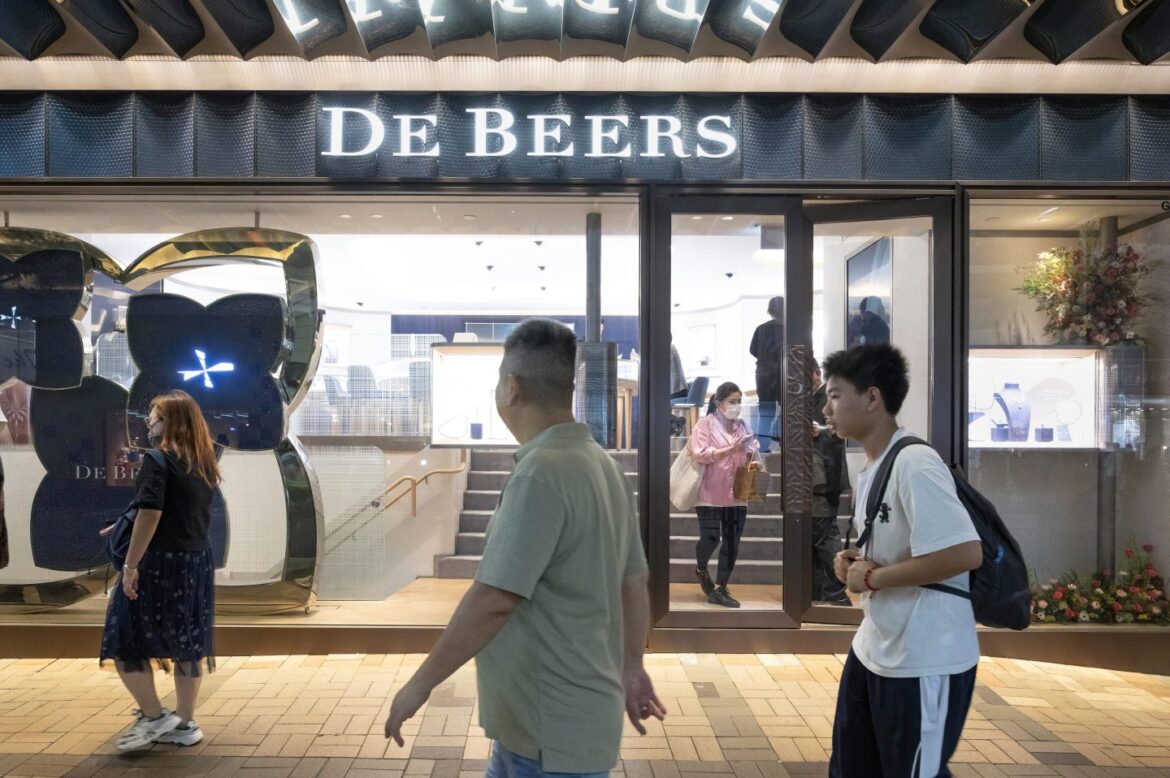De Beers, the world’s largest diamond producer by value and currently up for sale by parent company Anglo American, has launched an ambitious five-year strategy to reposition itself as the leading jewelry group in the market.
While De Beers already sells diamond jewelry through its global retail boutiques, Chief Executive Al Cook aims to expand the number of outlets to compete with profitable luxury brands such as Tiffany and Cartier.
“If I look at the future of diamonds, it is way beyond mining,” Cook told the Financial Times. “I’m really excited by the idea that we can deploy our full strategy to create the world’s greatest jewelry maison [house], which would not typically be part of a mining company.”
De Beers has a history of driving increased demand for mined diamonds, and its “Origins” strategy seeks to appeal to a new generation of consumers.
This plan involves revitalizing category marketing to boost interest in diamonds and using innovative methods to maximize reach and impact.
In a significant shift, De Beers is ending its six-year experiment with lab-grown diamond jewelry through its brand Lightbox, created in 2018.
While the company will not immediately halt the sale of Lightbox stones, it plans to phase out the unit once current inventory is depleted, which will take about a year.
Collaborating with retailers is crucial to De Beers’ new approach. The successful “Seize the Day” pilot campaign, launched in September 2023, demonstrated this with support from over 22,000 retail stores. De Beers plans to develop strategic partnerships with major retailers, including Signet Jewelers in the United States and Chow Tai Fook in China.
De Beers already owns the Forevermark diamond brand, sold through more than 2,400 jewelry retail stores.
The company has also launched dedicated stores in 16 different markets, including one on Madison Avenue in New York City and in the Houston Galleria. Additionally, De Beers operates the De Beers Jewellers website.
Diamond miners, large and small, have faced challenges in recent years due to increasing consumer preference for cheaper, lab-grown diamonds and global economic instability.
Consumer demand for diamonds dropped in both China and the US last year, which together account for about half of the global diamond jewelry market, according to the World Diamond Council.
In January, De Beers made one of the steepest cuts to its diamond prices in years, lowering them by about 10% to revive sales.
Market insiders noted that even larger price reductions were made for some bigger stones, with one category being lowered by 25%.
De Beers also revised its full-year production forecast in April to 26-29 million carats, down from the previously guided 29-32 million.
The company, which announced a $1.6 billion writedown in February, also increased expected average costs to $90 per carat from $80.
De Beers is targeting an annual core profit of $1.5 billion by 2028. Last year, the company made just $72 million, although its profits have traditionally ranged between $500 million and $1.5 billion, reflecting the diamond industry’s volatility.
The diamond miner appears ready to operate independently, as it did for 124 of its 136 years of existence. Anglo American acquired an 85% stake in De Beers in 2011, with the government of Botswana holding the remaining shares.
![]()




